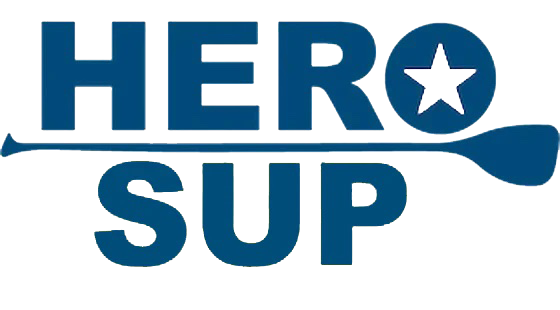
5 Simple Steps To Improve Your Paddle Board Technique
Share
Very few people actually take a SUP lesson before getting on a paddle board for the first time.
Bad habits can develop easily, which affect your stability, control, efficiency and not to mention muscle fatigue.
Improving your SUP technique is easier than you might think.
Follow the 5 simple steps below to paddle like a pro.
STEP 1: PROPER FOOT PLACEMENT

Proper foot placement and posture will ensure that you have the most balance on your paddle board and be fully in control.
As a beginner to novice paddler the best place to stand on your SUP is right around the centre of the board. This is usually very easy to locate as there will be a carry handle located there.
A good rule of thumb is to place your feet shoulder width apart on either side of the handle. For the most control very slightly angle your feet outward.
Distribute your weight evenly and do your best not to grip your toes to the deck pad as this will cause you to lose your balance.
STEP 2: GOOD SUP POSTURE

When you first get on a stand up paddle board you probably aren’t thinking about your posture at all but instead just doing everything you can to stay upright.
However bad SUP posture can very quickly lead to bad paddling habits. Making these corrections early will ensure that you are paddling as efficiently as possible without putting unwanted strain on your body.
Follow the steps below for proper SUP posture:
- Stand with your knees slightly bent. You should still be able to see your toes.
- Keep your knees angled over your feet, not caving inwards or outwards as you paddle.
- Keep your back straight.
- Keep your gaze towards the horizon. Looking down at your feet or looking around will cause you to lose balance and affect your paddling stroke.
- Always engage your core. Paddling from your core will create the most stability, proper weight distribution and efficiency. It will also help with tired arm, shoulder and back muscles.
STEP 3: SET THE CORRECT PADDLE LENGTH
Making sure your SUP paddle is adjusted to the correct length for your height is important to do before you get on the water.
With the paddle blade edge on the ground and the shaft parallel to your body, life your arm up over your head with a very slight bend in the elbow.
Adjust your paddle to the top height of your hand that is in the air. The hand of your outstretched arm should be able to comfortably wrap around the paddle grip.
Another good rule of thumb is to have the paddle height adjusted to 3-4 inches above your head. Once the height is set you can adjust accordingly based on your paddle style and what feels comfortable to you.
STEP 4: HOLD YOUR SUP PADDLE CORRECTLY

Holding and using the paddle the wrong way around is literally one of the most common mistakes with paddle boarders.
If you hold your SUP paddle incorrectly this can cause unnecessary fatigue in your arms, shoulders and back muscles.
So first and foremast let’s make sure the blade of the paddle is facing the right way. The slope of the blade should face away from you.

An easy way to remember with the Hero SUP paddles is to check if the Hero SUP logo is facing away from you towards the front of your board.
For correct hand placement place one hand on top of the paddle grip. Your bottom hand should grip the shaft about half way down.
STEP 5: PERFECT YOUR PADDLING STROKE

Now that you have the proper foot placement, posture, correct paddle height and grip it’s time to perfect your SUP stroke.
REACH & CONNECT
Reach forward and push the blade in deep making sure the entire blade goes into the water.
USE YOUR CORE

Another extremely common mistake that beginner paddlers make is that they paddle with their arms, not with their core.
Engage your stomach muscles and pull the paddle through the water with your core and back. Keep both arms mostly straight from beginning to end.
A good imagery that we have always found helpful is to imagine that you are pulling the board toward the paddle, not the paddle to the board.
If you can mainly use your core and back muscles you will be able to go much further with less fatigue as these muscles have more strength than your arms.
THE EXIT
Once the paddle reaches your feet lift that paddle out of the water and rotate the paddle back to the front of your body.
Keep your legs slightly bent and your core engaged as you start your next stroke.
FINE TUNING YOUR TECHNIQUE
Remember to take a break and wiggle your toes once in a while to let out some tension especially if you are new to paddle boarding.
A little fine tuning can make a huge difference in your paddling technique and have you paddling like a pro in no time.
